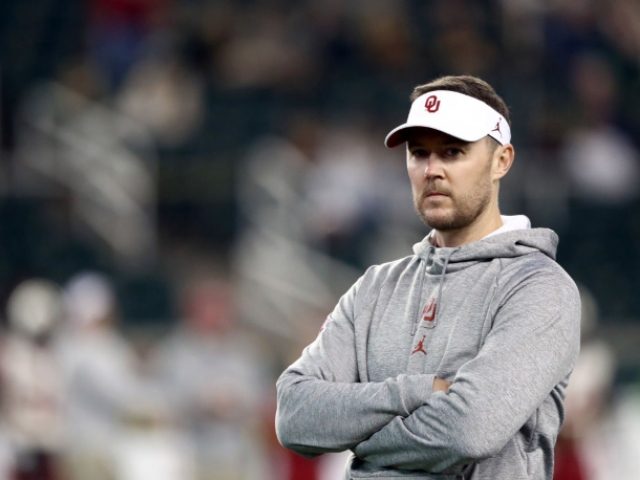For those of you keeping track at home, the media narrative surrounding the return of college football has been that playing the season is way too dangerous and players would be much safer not practicing or playing football.
Well, that narrative just got pancaked.
On August 8, Oklahoma Sooners head coach Lincoln Riley let his team go on a break to visit their families. As of the 14th, after only six days of being home, nine returning football players tested positive for the virus. A “relatively small number” of other players are being isolated due to contact tracing.
“It’d be pretty easy for me to say right now that I regret it,” Riley said when reflecting on his decision to let the team return home. “I also feel like if I keep a team pinned up here for a six- or seven-week training camp I probably would regret that, too.”
As ESPN reports, until the recent rash of tests, Oklahoma had been one of college football’s virus success stories. Despite the fact that the players were living and practicing together for an extended period of time.
“After announcing 14 positive tests in the initial round of testing when the team returned for July 1 workouts, the Sooners had only one positive player test in the next five weeks, including a four-week span from July 8 to July 29 with zero positives,” ESPN reports. “From July 1 to Aug. 8, the Sooners conducted 700 player tests, resulting in only 15 positives. Out of 186 tests of staff, only two have tested positive. The combined player and staff positivity rate of 1.9% in that five-week span was well below the state of Oklahoma’s, which has been above 6% during the same time span and at one point reached as high as 10%.”
So, contrary to the narrative spun by the media and much of the leadership of the Power 5 conferences, the Sooners suffered their huge surges in positive virus tests when reporting to football after having been home. Not, as the narrative would suggest, after having practiced and worked out together as a team.
In other words, the players were safer from the virus when playing football.
“The area that our team has got to do a better job on when we’re not here,” Riley said. “And we’ve known forever that that was going to be the major concern.”
Riley might want to explain that to the leadership of the Pac-12 and Big 10.
Follow Dylan Gwinn on Twitter @themightygwinn

COMMENTS
Please let us know if you're having issues with commenting.